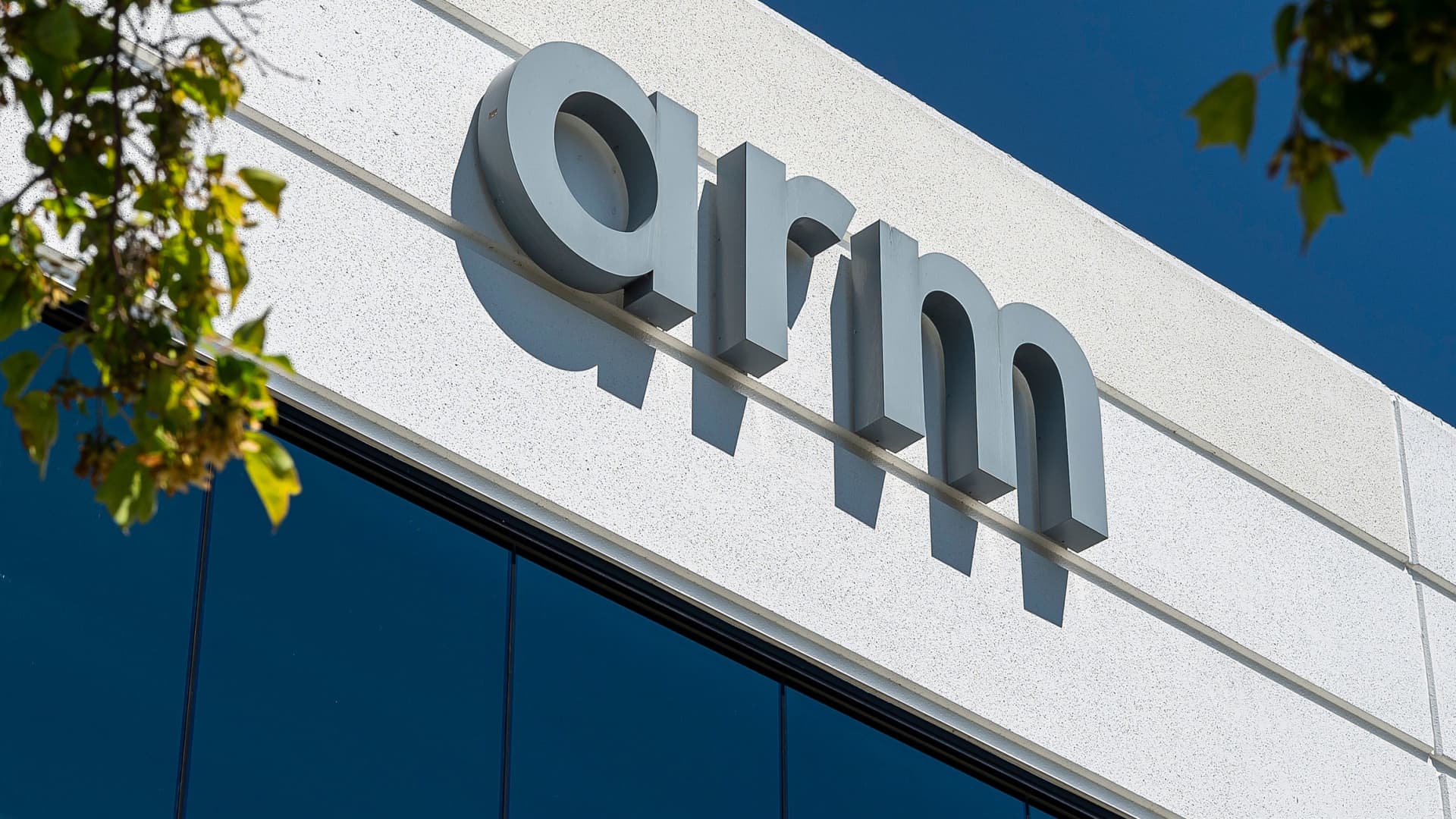Arm prices IPO at $52 per share, valuing chip designer at $55.5 billion

The Arm US headquarters in San Jose, California, on Wednesday, Sept. 6, 2023.
David Paul Morris | Bloomberg | Getty Images
Arm, the chip design firm that supplies core technology to companies including Apple and Nvidia, priced its IPO at $52 a share, according to a source familiar with the matter.
Arm’s fully-diluted market cap, which includes outstanding restricted stock units, is about $55.5 billion at the $52 offer price.
The British company is listing at least 95.5 million American depository shares on the Nasdaq, and SoftBank, its current owner, will control about 90% of the company’s outstanding shares.
The offering is priced above Arm’s expected price range of $47 to $51. The company will start to trade on Thursday under the symbol “ARM.”
Arm said in its prospectus that revenue in its fiscal year that ended in March slipped less than 1% from the prior year to $2.68 billion. Arm reported $524 million in net income, down 22% from 2022.
Arm is riding the wave of excitement around artificial intelligence to raise investor capital. It could kick open the market for technology IPOs after a nearly two-year pause. It’s set to be the biggest technology IPO of the year.
Arm’s valuation for a chip company is exceedingly rich when compared to any player in the market other than Nvidia. At $55.5 billion, Arm would carry a price-to-earnings multiple of over 106, based on profit in the latest fiscal year.
Nvidia is valued at 108 times earnings, but that’s after forecasting revenue growth of 170% for the current quarter. The Invesco PHLX Semiconductor ETF, designed to measure the performance of the 30 biggest U.S. chip companies, has a price-to-earnings ratio of about 25.
Many of Arm’s most important customers, including Apple, Google, Nvidia, Samsung, AMD, Intel, Cadence, Synopsis, Samsung and Taiwan Semiconductor Manufacturing Company, will buy shares as part of the offering. Its technology is used in 99% of mobile processors around the world.
Arm’s architecture outlines out how a central processor works at its most basic level, such as how to do arithmetic or how to access computer memory. It was originally founded in 1990 to build chips for devices with batteries, and took off when it started to be widely used in smartphone chips. Arm’s instruction set uses less power than the x86 architecture used in PC and server chips by Intel and AMD.
While some of Arm’s customers just use the instruction set and design their own CPUs, Arm also licenses entire designs of its own to chipmakers they can use as CPU cores in their own chips. Amazon uses Arm CPU designs in some of its server chips.
In a presentation to investors, Arm officials said that it has room to grow beyond just smartphones, and wants to design more chips for data centers and artificial intelligence applications. It said it expects the total market for chip designs to be worth about $250 billion by 2025.




